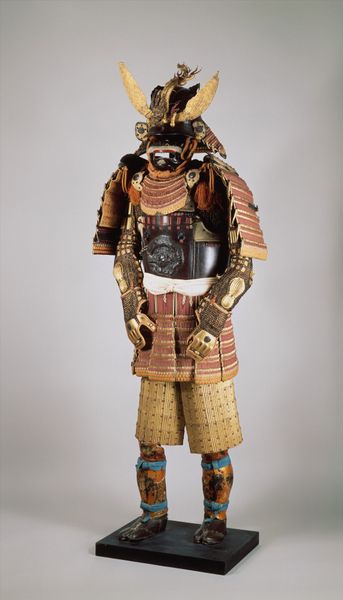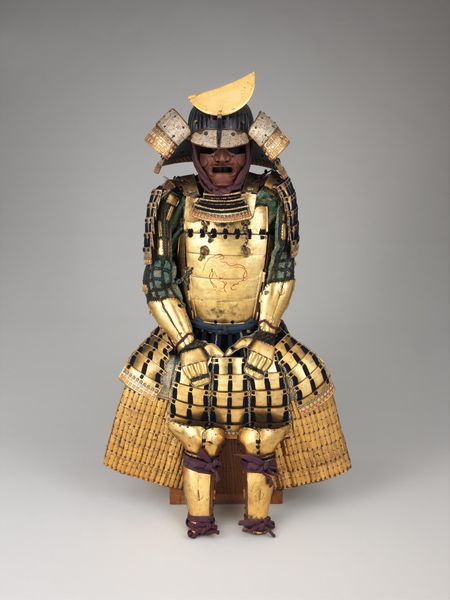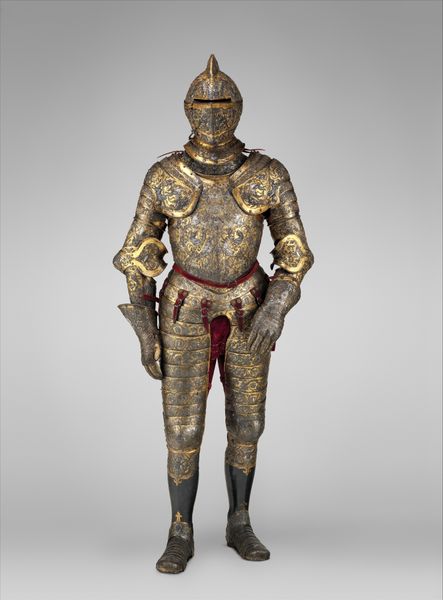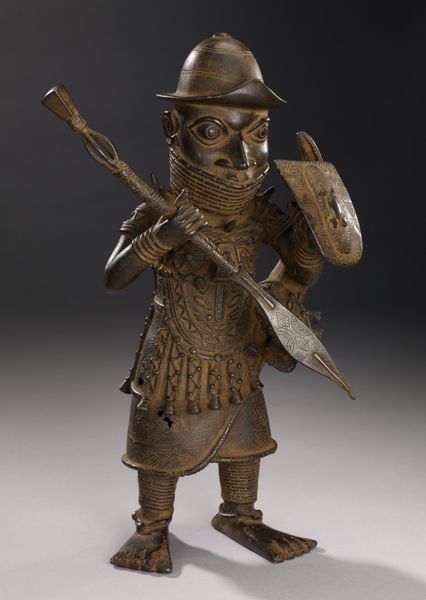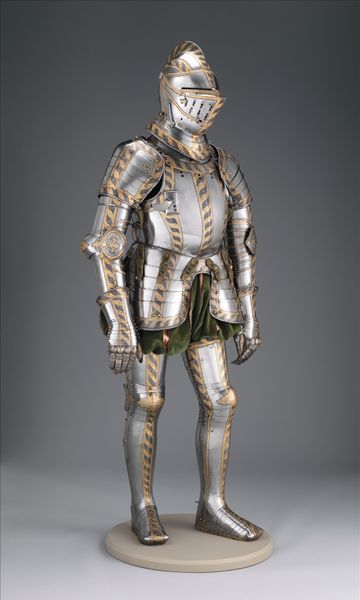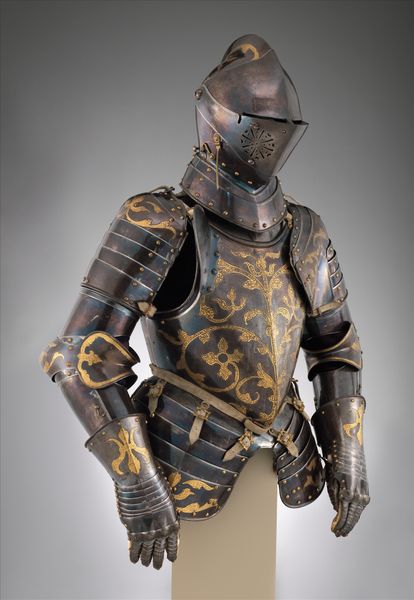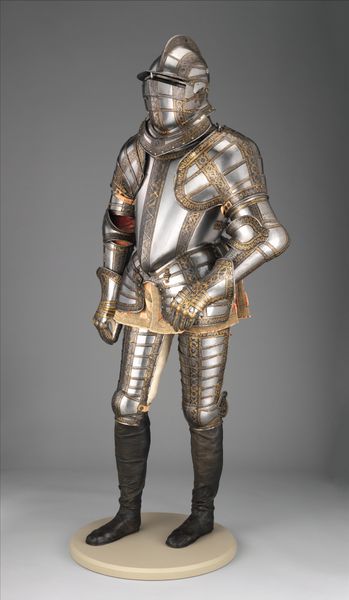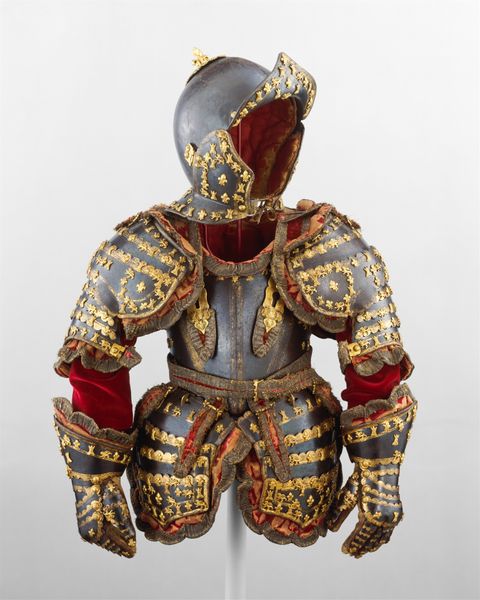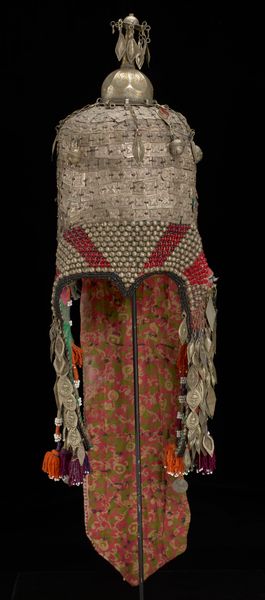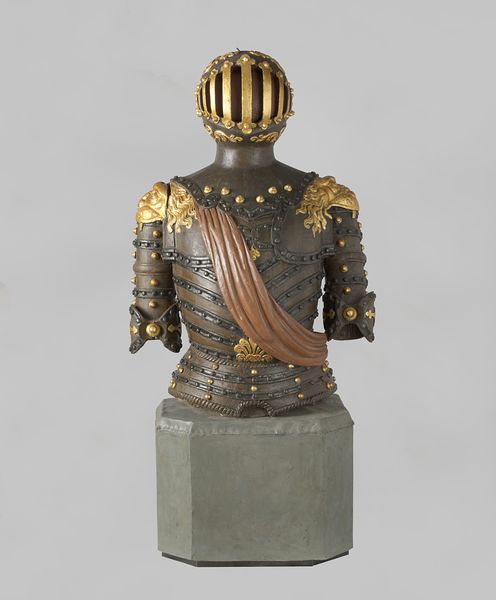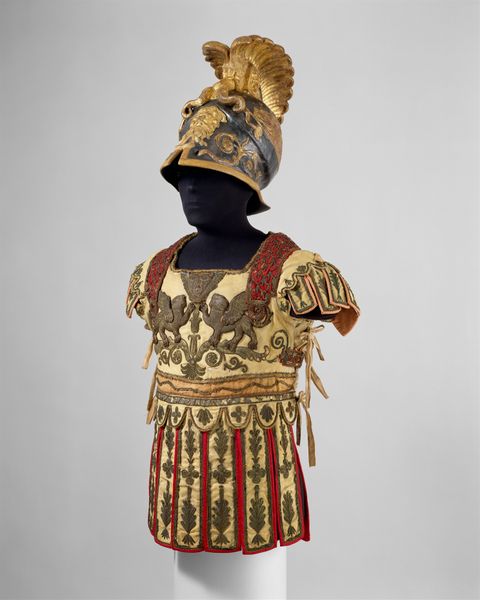
assemblage, metal, gold, textile, sculpture
#
assemblage
#
metal
#
asian-art
#
gold
#
textile
#
japan
#
geometric
#
sculpture
#
armor
Dimensions: as mounted, H. 68 1/2 in. (174 cm); W. 24 in. (61 cm); D. 22 in. (55.9 cm)
Copyright: Public Domain
Curator: At first glance, I am struck by the geometric precision of this elaborate assemblage, each lacquered plate so carefully fitted and joined to the next. Editor: The sheer presence of this Gusoku is commanding, isn’t it? A monument to labor and layered processes...It really evokes power, but with an incredible rigidity. Curator: Indeed. This suit of Japanese armor is currently held here at The Metropolitan Museum of Art, and while the materials date from 1600 through to 2015, it represents the continuity and evolution of artisanal techniques over centuries. Armor like this wasn't just protective gear; it was a status symbol. Editor: Looking at the fine gold detailing, particularly how it contrasts with the deep red lacquered elements, I am wondering about the social implications of all this visible expenditure. How much labor went into each of these minute sections? Curator: Exactly. The armor becomes a representation of social hierarchy and control. The visual impact alone, designed for intimidation and reverence, highlights the ritualized aspects of combat and governance of the time. Each choice made in materials, construction, and embellishment communicates power within a rigid structure. Editor: And thinking of the artisans who crafted this – we're talking about metal workers, textile artists, lacquer specialists. It prompts reflection on pre-industrial craft production, a whole network of laborers dedicated to this single output. What a fascinating testament to the complexities of production in historical Japanese society! Curator: It certainly is. Viewing it today, devoid of its original context, the "Armor (Gusoku)" transcends function and becomes a powerful statement of intent, doesn't it? Its rigid structure communicates so much of the societal order that the wearer sought to embody. Editor: Absolutely. It makes you appreciate not just the final piece, but the whole system of production and consumption surrounding it, even centuries after its creation. The social story the armor can tell from its past lives makes one realize the potential impact for societies’ values on materials.
Comments
No comments
Be the first to comment and join the conversation on the ultimate creative platform.
